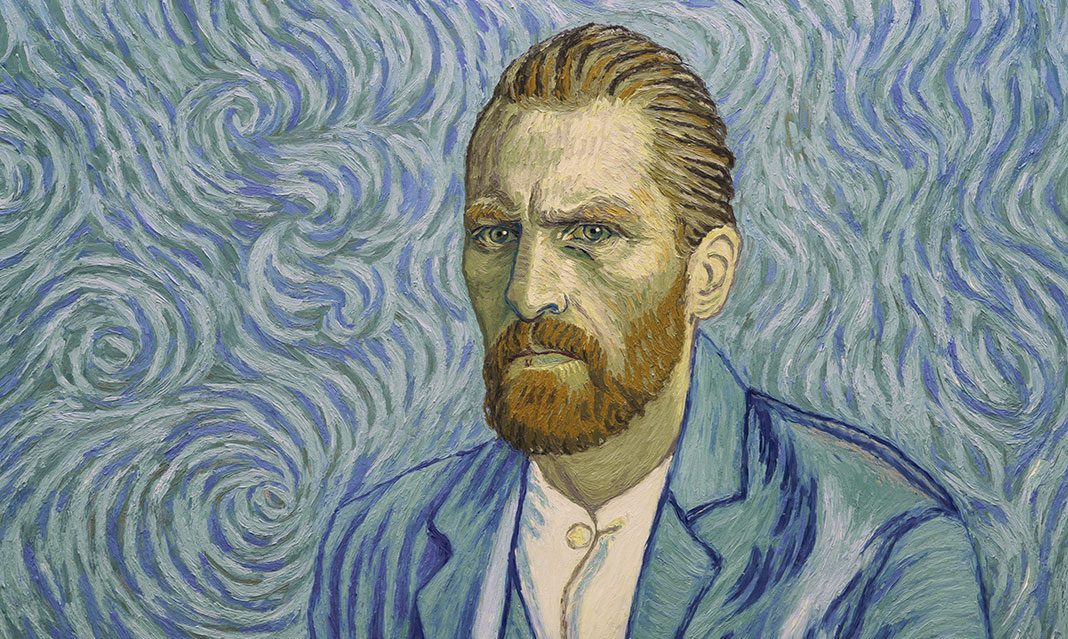The life of esteemed artist Vincent Van Gogh was shrouded in mystery. He was a conflicted painter who infamously cut off his ear and had struggles with success. In Loving Vincent, directed by Dorota Kobiela and Hugh Welchman, Van Gogh’s life is chronicled one year after his death when Armand Roulin (Douglas Booth) is tasked with delivering Van Gogh’s last letter to his brother Theo.
Van Gogh was a Dutch painter who struggled throughout his life as an unsuccessful artist with many considering him talentless and manic. It was only after his suicide at the age of 37 that he garnered acclaim. Now, he is considered as one of the most influential modern artists. Loving Vincent presents his life through flashbacks as Roulin encounters villagers who share their stories of the artist.
The animation style is an achievement. It is the first film in the world that presents a storyline fully through paintings. Over 100 oil painters painted 65,000 frames of the film with Van Gogh’s signature style. Each character is also inspired by portraits that Van Gogh created—it looks as if his artwork has come to life.
At the beginning of the film, one of Van Gogh’s most famous pieces, “The Starry Night,” swirls around and it is visually stunning seeing this unique form of storytelling. The aspect ratio is also the same dimensions as an art canvas which enhances the style and the feeling that each frame belongs in a gallery.
I thought that Roulin’s journey of delivering Van Gogh’s letter is compelling as he confides in different villagers who knew different sides of the artist. The flashbacks of Van Gogh’s life are presented in black and white—this shift in colour brings down the tone as he battles with mental illness and self-worth.
As someone who was only familiar with the major events in Van Gogh’s life, I was never aware of the obscure controversy surrounding his death. His suicide is suspicious as his mental health was improving with treatment from Dr. Gachet (Jerome Flynn), who was known to be jealous of Van Gogh’s talent. Furthermore, his suicide is made more suspicious when it became known that other villagers had malicious intentions towards Van Gogh. What has been reported is that Van Gogh shot himself in the lower stomach and died days later, but Roulin also uncovers that the position the bullet entered is an odd and ineffective place to be ruled as an act of suicide.
Although the mystery and style of the film is captivating, the plot is lacking depth and can be conventional at times. As Roulin speaks to each villager, they refer him to another person to speak with—this cycle became tedious because of the heavy dialogue. It would have been more interesting to include more flashbacks showing Van Gogh’s life rather than each character just speaking to Roulin. The lack of cemented facts surrounding Van Gogh’s final days makes it hard at times to follow because each character has their own theory, but is quickly discredited by a later character Roulin encounters.
As Roulin uncovers more about Van Gogh, who would go to great extremes to express his creativity, it takes a toll on him. Van Gogh’s attempts to overcome the adversity of lacking proper art tools or being the victim of local children’s taunts is harrowing to watch. It is difficult not to feel sympathy since Van Gogh is considered a world-renowned artist today. The fact that he died without seeing any success demonstrates the lengths that one may go through to share their talent with the world.
Loving Vincent is an engaging look at the life of Vincent van Gogh as his unique style and subjects share the story of the quintessential struggling artist.



